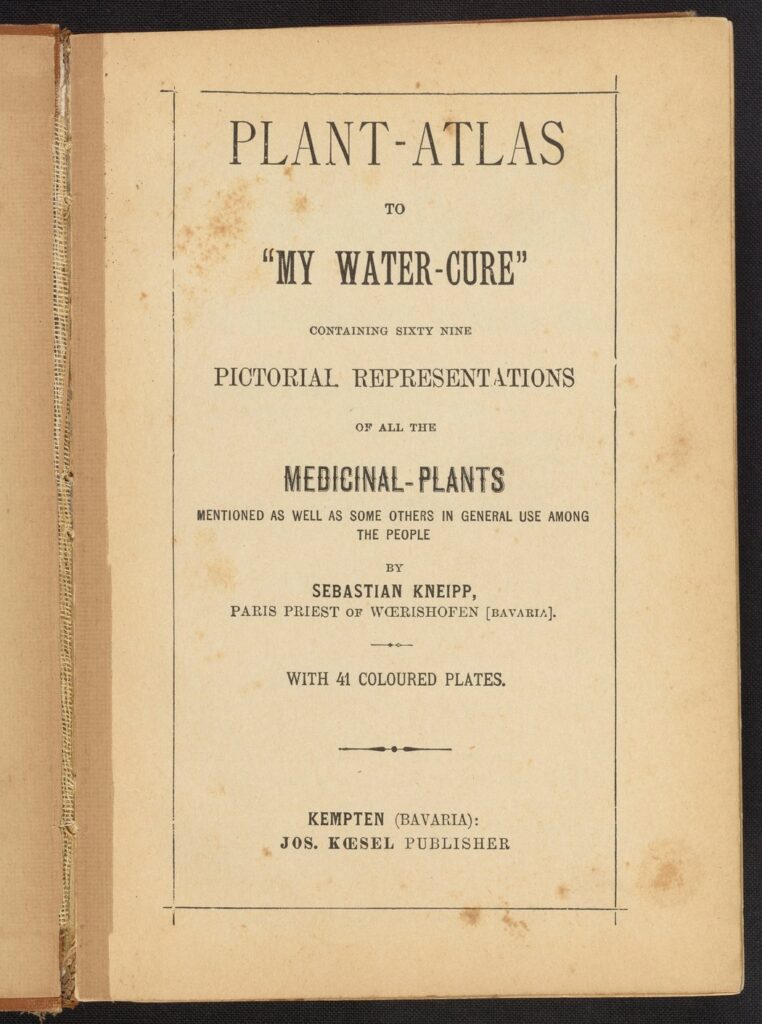
Another new year begins. What a good time it is to become familiar with German Naturalist Sebastian Kneipp, born 200 years ago, and his Five Pillar holistic system for good health as a guide for our New Year’s Resolutions!
The Sebastian Kneipp Five Pillar System for Holistic Good Health
Over 125 years ago, Sebastian Kneipp, a Catholic priest and naturalist from Bavaria, laid out five pillars for good health in his book “My Water Cure.” The principles of his holistic heath system are based on:
Water: The importance of internal applications like drinking enough water as well as external applications like hydrotherapy treatments for improved physical and mental well-being.
Plants: The use of herbal and plant based remedies and applications for the treatment of illnesses and states of mental stress.
Exercise: The importance of movement, including physical labor, sport, outdoor activities (particularly walking in the woods).
Nutrition: A critical component, focused on natural products, grains and modest meal portions.
Balance: Maintaining the critical balance between physical, emotional and spiritual well-being. Adequate rest and time for quiet reflection are key.
The Kneipp philosophy is still popular in Germany today. Kneipp herbal and plant-based health products are sold in supermarkets, drug stores and organic food shops throughout the country, and the brand is a generic for herbal products much like the brand ‘Kleenex’ stands for tissues in the USA.

In recognition of the enduring relevance of the Kneipp Five Pillar System, UNESCO recognized the Kneipp philosophy as an Intangible German Cultural Heritage in 2015.
The History of Sebastian Kneipp and the Kneipp Brand
Sebastian Kneipp was born in 1821. He was interested in natural treatments and the world of plants from a young age. At the age of 26, Kneipp contracted tuberculosis. He read a book by Dr. Johann Siegmund Hahn on the healing power of water and began to take cold baths with water from the Danube on a regular basis as a treatment. His health improved, and by 1852 he was fully cured of TB.
Soon Kneipp started treating patients, including his wife, who had cholera. She was also cured. In 1855, Kneipp moved to Wörishofen in Bavaria, where he began to systematically research and test his therapies, evolving them into a holistic health system. He published his book “My Water Cure” in 1886, followed by a second book titled “Thus Shalt Thou Live” in 1889.
In 1891, Kneipp gave the marketing rights for his brand to a Würzburg pharmacist, who used his ingredients to develop pharmaceutical and cosmetic products.
Wörishofen became the first official Kneipp spa and treatment center in the 1890’s, followed by Münstereifel in North Rhine Westphalia in 1926. Today there are over 60 accredited Kneipp spas and treatment centers throughout the country.
Kneipp and the Natural Cure Movement in the 18th Century
The Kneipp movement can be viewed as part of the general Natural Cure Movement in Germany during the 18th Century. This movement was essentially naturalist and inherently critical of industrialization and urbanization trends. Holism and vitalism were core components of the movement, which propagated a lifestyle based on natural elements like air, water and sunshine. The movement was inherently critical of substances like alcohol and tobacco. They viewed vaccinations with skepticism.
Kneipp differed from others in this movement, because he worked closely with the medical community to develop his treatments. He never rejected medicine or vaccinations. His plant-based remedies were the basis for modern homeopathy and herbal remedies. And the hydrotherapy treatments he used were the forerunners of modern health and wellness applications ranging from whirlpool baths, cold plunge baths, underwater massage, water jets, mineral baths and many more.

Sources:
Wikipedia
